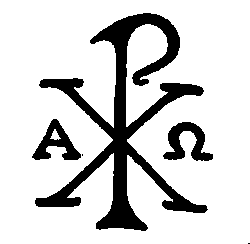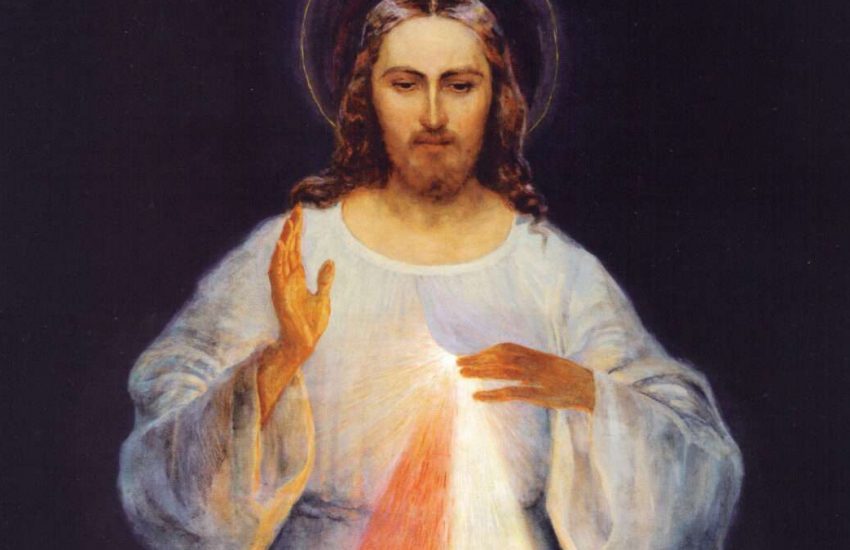Gospel For Today: 5th Sunday of Easter
FIFTH SUNDAY OF EASTER (A)

Last week we read about Jesus, the good shepherd. We noted that in the same passage Jesus also referred to Himself as the gate through which the sheep must pass to enter the pasture. We spoke about this curious juxtaposition of Jesus as both the shepherd leading the sheep and the gate through which they must pass.
In today’s gospel (Jn 14:1-12) we have a similar combination of metaphors used by Jesus to describe Himself. “I am the way and the truth and the life,” our Lord tells the disciples. Jesus tells us that He is the truth and the life. But not only that, He is also the way to obtain these things. He is simultaneously the destination and the journey.
You can be forgiven if this all sounds a bit confusing to you. And truly, if it were anyone other than Jesus speaking, this would make no sense. “To find me, you must follow me. To obtain me, you must have me.” If you or I were to speak like this, people would worry about us. But these words of Jesus begin to make sense when one discovers who this Jesus truly is.
In the same passage, Jesus tells Thomas, “No one comes to the Father except through me,” while telling Philip, “Whoever has seen me has seen the Father.” Jesus is the way to the Father because He and the Father are one. Christ can say that he who sees Him sees the Father because Christ is the living icon of the Father. He is the visible sign on earth of the invisible reality of God. A visible sign of an invisible grace. This should sound familiar to anyone who has spent time in faith formation classes growing up. It’s the short definition of a sacrament.
The sacramentality of Christ is important to anyone who asks the question, “how do I find the way?” Jesus says “I am the way and the truth and the life,” and the sincere Christian replies, “My Lord, I want this truth and this life. I desire to follow the way. Where do I find this way?”
Those in Jesus’ time had it easy in one sense. Recall the rich young man who asked Jesus what he must do to gain eternal life. Jesus tells him to obey the commandments, sell all that he owned to give to the poor and then “come, follow me” (Mt 19:16-21). Okay, so maybe “easy” is not the right word to use, but at least those in Jesus’ day had a clear goal. To follow the way meant to literally follow Jesus. If you wanted to be a disciple you sought out the Master, so you could be near Him and learn from Him.
But here is the wonderful news. We still live in Jesus’ day. This is His time. Even though Christ does not walk the earth on two feet, He remains with us still in His Church. Just as Jesus is the ultimate sacrament of God, the Church is the sacrament of Christ, the visible sign of His invisible presence. That Church was founded by Christ to continue His ministry across time and space so that He might be present to all the faithful, in all times.
We spoke last week of baptism as the gate through which we enter the pasture of the Church. It is the gateway to the sacramental life. This includes confession, the sacrament of reconciliation between the repentant sinner and God. This includes the Eucharist, the ultimate sacrament of Christ’s presence, where we commune with Him most intimately by receiving Him into our very bodies. In short, when we today ask, “Where do I find the way?” the answer is in the Church.
In today’s second reading (1 Pt 2:4-9), St. Peter, our first pope, and the one to whom Jesus charged with feeding His sheep (Jn 21:17), describes the Church as the temple of God. Members of the Church are like the building blocks, with Christ Himself as the cornerstone. The temple was not only the dwelling place of God, but the proper place to worship and make sacrifices to Him. Likewise the Church today is the both where we find God’s presence and the place where we worship Him.
Our first reading today from Acts 6:1-7 tells the story of the first seven men to be ordained deacons in the Catholic Church. These men were presented before the Apostles “who prayed and laid hands on them.” This laying on of hands is a sign of conveying the apostolic authority of Christ, of ordaining men to carry on the ministerial work of the Church. Elsewhere in the New Testament, St. Paul speaks of laying hands on Timothy (1 Tim 4:14) to establish him in his ecclesial role. Through the ordination of bishops, priests and deacons the sacramental ministry of Christ continues to be present to us today, through this unbroken line of succession running back to the very Apostles who received their commission and authority from Christ.
Jesus says, “I am the way and the truth and the life.” Where do those who strive to follow Jesus find this way? They find it in the Church. It is telling that one of the very earliest names for the Christian movement was “the Way,” as we read in Acts 9:2. According to Acts, the followers of the Way were first called “Christians” in Antioch (Acts 11:26). St. Peter established the church in Antioch. History tells us he ordained a man named Ignatius as bishop to lead the church there before he left to establish the church in Rome with St. Paul.
This same St. Ignatius of Antioch would later write of the unity between Christ and His Church.
See that you all follow the bishop, even as Jesus Christ does the Father, and the priests as you would the apostles; and reverence the deacons, as being the institution of God. Let no man do anything connected with the Church without the bishop. Let that be deemed a proper Eucharist which is administered either by the bishop or by one to whom he has entrusted it. Wherever the bishop shall appear, there let the multitude of the people also be; even as wherever Jesus Christ is, there is the Catholic Church. — Letter to the Smyrnaeans ch 8
St. Ignatius is said to have learned the Christian faith from the Apostle John. Here in the words of this saint, successor of the Apostles, and member of that first generation of Christians, we find reference to the bishops, priests and deacons of the Church, the importance of a valid Eucharist, and that name by which we still know the Church of Christ today — Catholic (which means “universal”). What was true of the Church in his day is no less true in ours. To follow Christ is to be in union with His Church, the sacrament of His presence in our time, for all time.
“Wherever Jesus Christ is, there is the Catholic Church,” St. Ignatius assures us. Wherever Jesus Christ is, that is where I also desire to be.
—

WCU Catholic Campus Ministry
Matthew Newsome, MTh, campus minister
(828)293-9374 | POB 2766, Cullowhee NC 28723


